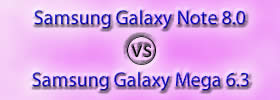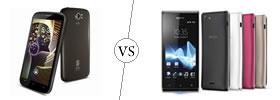Difference between Nexus 7 and Nexus 10
Key difference: The Nexus 7 is a tablet computer running Android 4.1 (also named Jelly Bean) operating system. It was developed in collaboration with Asus. The Nexus 10 is a tablet computer running Android 4.2 (also named Jelly Bean) operating system, which was released with it. It was developed in collaboration with Samsung.
 With the constant upgrade in technology these days, new models of smartphones as well as upgraded models of smartphones with new features are being constantly launched in the market. Smartphones have become a way of life for many people, allowing them to do anything and everything on the go. This includes typing up a document, chatting with friends, video conferencing, writing up reports, checking e-mails, etc.
With the constant upgrade in technology these days, new models of smartphones as well as upgraded models of smartphones with new features are being constantly launched in the market. Smartphones have become a way of life for many people, allowing them to do anything and everything on the go. This includes typing up a document, chatting with friends, video conferencing, writing up reports, checking e-mails, etc.
One of the most popular operating systems for smartphones and tablets is Android. Android is a Linux-based operating system owned and operated by the Open Handset Alliance, a consortium of 84 leading firms, which includes mobile handset makers, application developers, some mobile carriers and chip makers. The consortium is lead in part by Google, as well as HTC, Sony, Dell, Intel, Motorola, Qualcomm, Texas Instruments, Samsung Electronics, LG Electronics, T-Mobile, Sprint Nextel, Nvidia, and Wind River Systems.
A number of these companies’ smartphones and tablets run on Android. Android is an open source software, which means that the code is freely available for modification and distribution by device manufacturers, wireless carriers and enthusiast developers. Among the number of various companies, Google has also launched its own line of smartphones based on Android, called the Google Nexus. Each device in the Nexus line is produced via collaboration between Google and a leading original equipment manufacturer (OEM) partner.
The Nexus devices in general have an advantage over other devices in that the Android in the Nexus devices is pure. I.e. the Android does not have any manufacturer or wireless carrier modifications to it, such as a custom graphical user interface. The Android also has an unlockable bootloader to allow further development and end-user modification, all of which is usually blocked on other Android smartphones.
The Nexus 7 and Nexus 10 are two of the devices available in the Google’s Nexus line. The main difference between them is the fact that the Nexus 7 is a 7 inch tablet, while the Nexus 10 is a 10 inch tablet. Also, the Nexus 7 pre-dates Nexus 10.
The Nexus 7 is a tablet computer running Android 4.1 (named Jelly Bean) operating system. It was developed in collaboration with Asus. It was the first tablet in the Google Nexus series and features a 7-inch (180 mm) display, an Nvidia Tegra 3 quad-core chip, 1 GB of RAM, and 8, 16 or 32 GB of internal storage. The 8 and 16 GB models were Wi-Fi only, and the 8 GB was eventually discontinued. The 32 GB models are both Wi-Fi and 3G compatible. The Nexus 7 was marketed effectively as an entertainment device.
 The Nexus 10 is a tablet computer running Android 4.2 (also named Jelly Bean) operating system, which was released with it. It was developed in collaboration with Samsung. It is Google’s second tablet, directly following the Nexus 7. It features a 10.1-inch, 2560×1600 pixel display, which at the time of its release was the highest resolution display for a tablet.. The Nexus 10 features a Samsung Exynos 5250 system on chip, a dual-core 1.7 GHz Cortex A15 central processing unit and a quad-core ARM Mali T604 graphics processing unit. The Nexus 10 was launched in two storage sizes, 16 GB and 32 GB
The Nexus 10 is a tablet computer running Android 4.2 (also named Jelly Bean) operating system, which was released with it. It was developed in collaboration with Samsung. It is Google’s second tablet, directly following the Nexus 7. It features a 10.1-inch, 2560×1600 pixel display, which at the time of its release was the highest resolution display for a tablet.. The Nexus 10 features a Samsung Exynos 5250 system on chip, a dual-core 1.7 GHz Cortex A15 central processing unit and a quad-core ARM Mali T604 graphics processing unit. The Nexus 10 was launched in two storage sizes, 16 GB and 32 GB
As compared to Nexus 7, the Nexus 10 features Photo Sphere, a new camera technology that allows one to take 360 deg Panorama shots. The tablet also features a quick settings menu, allows for application of widgets on the lock screen, as well as gesture typing; an updated version of Google Now; and multiple user accounts for tablets.
The information for the detailed table about the two phones has been taken from the Google Nexus website and GSMArena.com.
|
|
Nexus 7 |
Nexus 10 |
|
Launch Date |
June 27, 2012 |
November 13, 2012 |
|
Company |
Google; designed in collaboration with and manufactured by Asus. |
Google; designed in collaboration with and manufactured by Samsung. |
|
Size |
198.5 x 120 x 10.5 mm (7.81 x 4.72 x 0.41 in) |
263.9 x 177.6 x 8.9 mm (10.39 x 6.99 x 0.35 in) |
|
Display |
LED-backlit IPS LCD capacitive touchscreen, 16M colors |
Super PLS TFT capacitive touchscreen, 16M colors |
|
Screen |
800 x 1280 pixels, 7.0 inches (~216 ppi pixel density) |
2560 x 1600 pixels, 10.1 inches (~299 ppi pixel density) |
|
Protection |
Corning Glass |
Corning Gorilla Glass 2 |
|
Weight |
340g (11.99 oz) |
603g (1.33 lb) |
|
2G Network |
GSM : 850/900/1800/1900 |
No |
|
3G Network |
WCDMA : 850/900/2100 |
No |
|
GUI |
Pure Android |
Pure Android |
|
CPU speed |
Quad-core 1.2 GHz Cortex-A9 |
Dual-core 1.7 GHz Cortex-A15 |
|
GPU |
ULP GeForce |
Quad-core Mali T604 |
|
OS |
Android OS, v4.1 (Jelly Bean), upgradable to v4.2.1 (Jelly Bean) |
Android OS, v4.2 (Jelly Bean), upgradable to v4.2.1 (Jelly Bean) |
|
Chipset |
Nvidia Tegra 3 |
Exynos 5250 |
|
RAM |
1 GB RAM |
2GB RAM |
|
SIM Size |
Micro-SIM for 3G model |
No |
|
Internal Memory |
16/32 GB storage |
16/32 GB storage |
|
Expandable Memory |
None |
None |
|
Sensors |
G-Sensor, Light Sensor, Gyroscope, E-compass, GPS, NFC, Hall Sensor |
Accelerometer, gyro, proximity, compass, barometer |
|
Connectivity |
|
|
|
Data |
WiFi, NFC, USB GPRS, EDGE for 32GB + Mobile data version only |
WiFi, NFC, USB |
|
Speed |
HSPA+ 21 Mbps |
HSDPA, 21 Mbps; HSUPA, 5.76 Mbps |
|
WLAN |
Wi-Fi 802.11 b/g/n |
Wi-Fi 802.11 a/b/g/n, Wi-Fi Direct, dual-band, Wi-Fi hotspot |
|
Bluetooth |
Bluetooth V3.0 |
Bluetooth v3.0 with A2DP |
|
USB |
Micro-USB |
Micro-USB v2.0 |
|
Primary Camera |
1.2 MP |
5 MP, 2592х1936 pixels, autofocus, LED flash |
|
Secondary Camera |
None |
1.9 MP |
|
Video |
720p |
1080p@30fps |
|
Camera Features |
Video-calling |
Geo-tagging, touch focus, face detection, video-calling |
|
Audio supported formats |
MP3/WAV/eAAC+/WMA player |
MP3/WAV/eAAC+/WMA/Flac player |
|
Video supported formats |
MP4/H.264 player |
MP4/H.264/DivX/WMV player |
|
Battery Capacity |
Non-removable Li-Ion 4325 mAh battery |
Non-removable lithium-ion polymer 9,000 mAh battery |
|
Available Colors |
Black |
Black |
|
Messaging |
Email, Push Email, IM, RSS |
Email, Push Email, IM, RSS |
|
Browser |
HTML5 |
HTML5 |
|
Radio |
No |
No |
|
GPS |
Yes |
Yes, with GLONASS |
|
Java |
None |
None |
|
Additional Features |
|
|
Image Courtesy: androidheadlines.com









Add new comment